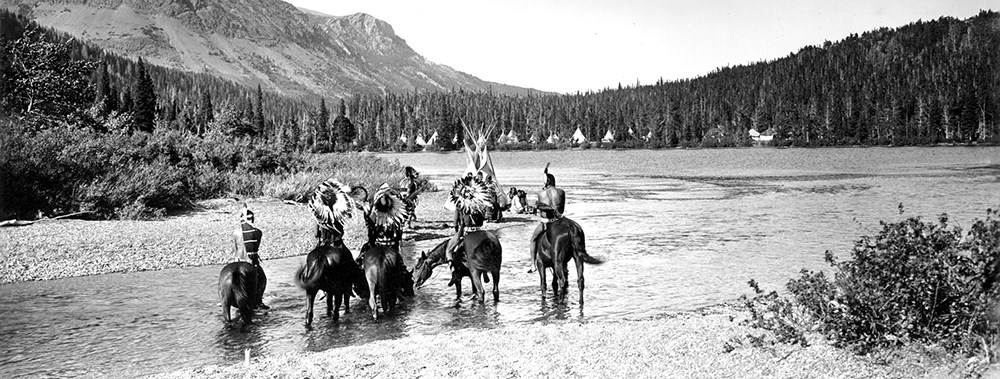Should We Return National Parks to the Tribes

The history of the big iconic national parks is one of open theft from the tribes. Historians such as Karl Jacoby and Mark David Spence have explored these issues in depth and you should read their books. The Ojibwe writer David Treuer explores this history in a long Atlantic piece and argues that management of these parks should be returned to the tribes. This is the conclusion:
All 85 million acres of national-park sites should be turned over to a consortium of federally recognized tribes in the United States. (A few areas run by the National Park Service, such as the National Mall, would be excepted.) The total acreage would not quite make up for the General Allotment Act, which robbed us of 90 million acres, but it would ensure that we have unfettered access to our tribal homelands. And it would restore dignity that was rightfully ours. To be entrusted with the stewardship of America’s most precious landscapes would be a deeply meaningful form of restitution. Alongside the feelings of awe that Americans experience while contemplating the god-rock of Yosemite and other places like it, we could take inspiration in having done right by one another.
Placing these lands under collective Native control would be good not just for Natives, but for the parks as well. In addition to our deep and abiding reverence for wild spaces, tribes have a long history of administering to widely dispersed holdings and dealing with layers of bureaucracy. Many reservations are checkerboarded: Large parcels of reservation land are scattered and separated from one another. And much of the land within reservation boundaries is owned by a number of different interests—private, nontribal citizens; corporations; states; the federal government—that tribal leadership balances and accommodates. Through hard practice—and in the face of centuries of legal, political, and physical struggle—Indian communities have become adept at the art of governance. And tribes have a hard-earned understanding of the ways in which land empowers the people it sustains.
Transferring the parks to the tribes would protect them from partisan back-and-forth in Washington. And the transfer should be subject to binding covenants guaranteeing a standard of conservation that is at least as stringent as what the park system enforces today, so that the parks’ ecological health would be preserved—and improved—long into the future. The federal government should continue to offer some financial support for park maintenance, in order to keep fees low for visitors, and the tribes would continue to allow universal access to the parks in perpetuity. Bikers and toddlers, Instagram models and Tony Hawk—all would be welcome. We would govern these beautiful places for ourselves, but also for all Americans.
There is precedent for this kind of transfer. The indigenous peoples of Australia and New Zealand now control some of those countries’ most significant natural landmarks. For instance: Uluru, previously called Ayers Rock, was transferred to the Anangu decades ago. Thanks to legislation passed in 1976, nearly half of the Northern Territory of Australia has been returned to Aboriginal peoples. In 2017, New Zealand’s Māori were granted a greater role in the conservation of the Whanganui River, on New Zealand’s North Island. The public is still free to visit as before, but the Māori now have more oversight of the use of the river.
There is a precedent for this kind of transfer in America, too. In 1880, France began work on the Panama Canal, which the United States took over in 1904. Theodore Roosevelt (he keeps coming up) wanted to see it through, and so he worked out a deal with Panamanian nationalists, whereby the U.S. would receive the canal in exchange for help overthrowing the Colombian government. But in 1977, President Jimmy Carter and General Omar Torrijos of Panama signed an agreement that outlined the transfer of control of the canal to Panama. The canal was jointly managed by the two countries until 1999, when control reverted fully and finally to Panama. It doesn’t happen often, but the United States has given things back.
In 1914, the historian Frederick Jackson Turner argued that American democracy was forged on the frontier. It was there that the uniquely American mixture of egalitarianism, self-reliance, and individualism commingled to form the nation and its character. “American democracy,” he said, “was born of no theorist’s dream … It came out of the American forest, and it gained new strength each time it touched a new frontier.”
Turner was almost right. It wasn’t the frontier that made us as much as the land itself, land that has always been Native land but that has also come to be American. The national parks are the closest thing America has to sacred lands, and like the frontier of old, they can help forge our democracy anew. More than just America’s “best idea,” the parks are the best of America, the jewels of its landscape. It’s time they were returned to America’s original peoples.
There’s a strong case to be made for the point and Treuer makes it well.
I will also point out that when I type “Ojibwe” into Disqus, it comes up as a misspelled word, another example of how racism plays out in technology.


